Middle School Sports Arena Lighting Design Solution
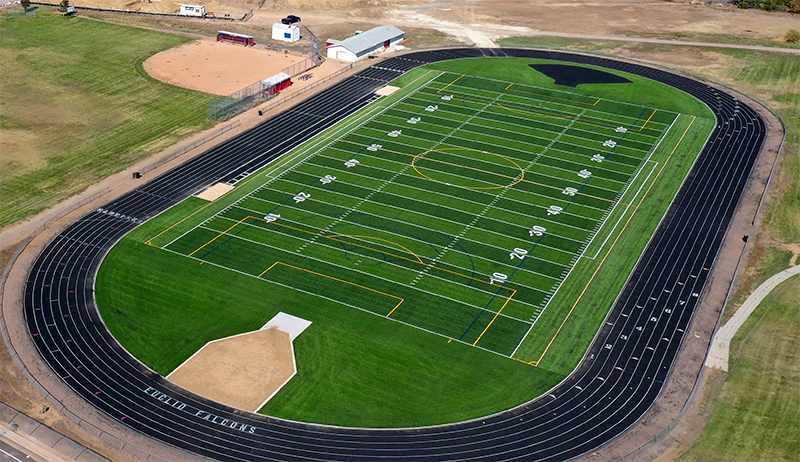
Directory:
1. Sports Arena Lighting Standards and Grade Selection
2. Sports Arena Lighting Fixtures Selection
3. Sports Arena Lighting Design Solution
4. Post-Implementation and Assurance
The sports arena at a middle school serves as a vital space for students to engage in physical activity and socialize. Given that middle school students have a lengthy schedule, the stadium is utilized from early morning until night. Adequate lighting in the stadium is essential for providing a safe and visually appealing environment for both teachers and students. However, the lighting facilities at a particular school stadium have been neglected for an extended period and are showing signs of deterioration. The nighttime illumination is inconsistent and inadequate, failing to meet the requirements for school activities and instruction. Consequently, the school has initiated renovations for the sports arena.
1. Sports Arena Lighting Standards and Grade Selection
The lighting needs of the sports arena vary based on the competition level and whether television broadcasting is involved. The middle school stadium primarily focuses on accommodating daily sports and assembly events. Therefore, considering construction and operational costs, the stadium typically does not account for television broadcasting requirements and should adhere to standards and parameters suitable for amateur competitions. The reference standards are detailed in Table 1.
table1 Standard lighting values for football and athletics venues for television broadcasts

2. Sports Arena Lighting Fixtures Selection
In recent years, the advancement and widespread use of LED technology have led to the gradual replacement of traditional light sources with LED lights, particularly in sports facilities. LED lamps offer great flexibility in terms of luminous efficiency, control strategies, power distribution, lamp arrangement, and projection angles. Therefore, it is essential to leverage these features, modify the layout of conventional gas discharge lamps, enhance the lighting quality in venues, and reduce energy consumption.
3. Sports Arena Lighting Design Solution
3.1 Objectives of the Design
(1) Effective control of glare and light spill to prevent disruption to athletes and the surrounding area.
(2) Compliance with established illumination standards to meet the lighting needs of students and ensure safety during nighttime activities.
(3) Capability for dimming to accommodate various venue requirements and promote energy efficiency.
(4) A comprehensive system solution to prevent compatibility issues and maintain the overall quality of the lighting products.
3.2 Lighting Configuration
The sports arena utilizes a four-tower lighting arrangement, with light towers positioned at each corner of the stadium. Each tower stands 27.3 meters tall and is equipped with 16 sets of lamps (refer to Figure 1).
fig1 Lighting Retrofit effect
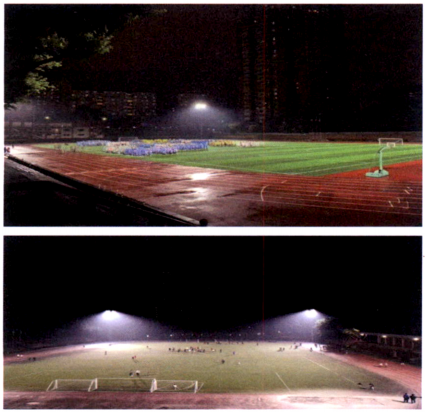
3.3 Lighting Assessment
Based on the requirements of the school, a tailored set of lighting solutions is developed using AIM illumination calculations with specialized lighting design software and advanced LED products, taking into account the specific conditions of the venue (refer to Figure 2).
fig2 Lighting design and illumination calculation
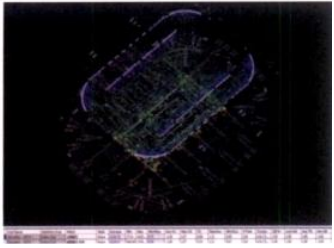
After effectively optimizing the aiming points and placements of 64 lamp sets, the calculated illumination level of the stadium is 537 lux, with a uniformity ratio of 0.79. which fully complies with national standards. The detailed calculated values are presented in Figure 3.
fig3-a Illuminance calculation
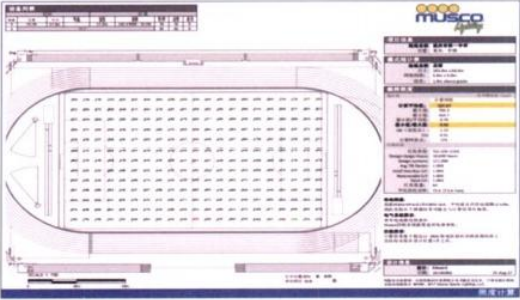
fig3-b Illuminance calculation summary
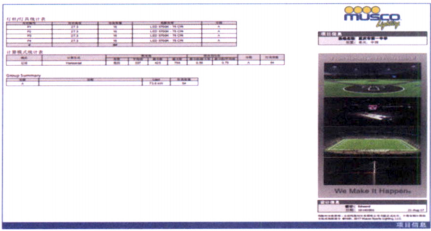
3.4 Glare Management
This renovation incorporates a digital and intelligent professional anti-glare control system along with the patented anti-glare device from "Masco." Each light bead is fitted with an individual anti-glare device that precisely manages the light and redirects any excess light projected onto the competition area back into the field. This enhances the illumination and light efficiency of the field, minimizes the effects of glare and stray light on athletes and the surrounding environment, and addresses issues related to glare and light spillage.
4. Post-Implementation and Assurance
(1) During the post-implementation phase, it is crucial to adhere strictly to the design plan, accurately position and orient the lamps, and conduct thorough measurements and adjustments throughout the process to ensure optimal lighting effects and uniformity. This will help eliminate dark spots on the field, lessen visual challenges for athletes, and create a safer and more comfortable sporting environment.
(2) A systematic approach to design, construction, and testing will be employed to guarantee the efficiency and longevity of the entire lighting system.
(3) High-quality, durable lamps will be utilized. These products are designed to maintain illumination levels with no more than a 5% decrease over a decade, ensuring that the lighting level and uniformity of the venue remain consistent with the original design. This approach mitigates the illumination degradation commonly seen in traditional lamps due to aging light sources, thereby lowering additional equipment, maintenance, and labor costs, and ensuring hassle-free operation.
(4) The lighting aiming of the lamps will be completed at the factory, tailored to the specific conditions of the school venue, allowing for precise light control and easy installation without disrupting the school's daily activities.
(5) A three-level dimming control system will be implemented to allow for flexible adjustments of power percentages, promoting energy savings.
Middle school sports arena Lighting should deliver high-quality, versatile lighting solutions to accommodate the diverse needs of these facilities. The integration of digital sports lighting in middle school sports arena serves as an exemplary case, helping users reduce costs while achieving energy efficiency. This initiative not only sets a standard for similar venues but also ensures safety and reliability, supporting the implementation of sustainable development principles.
5. Related Blog